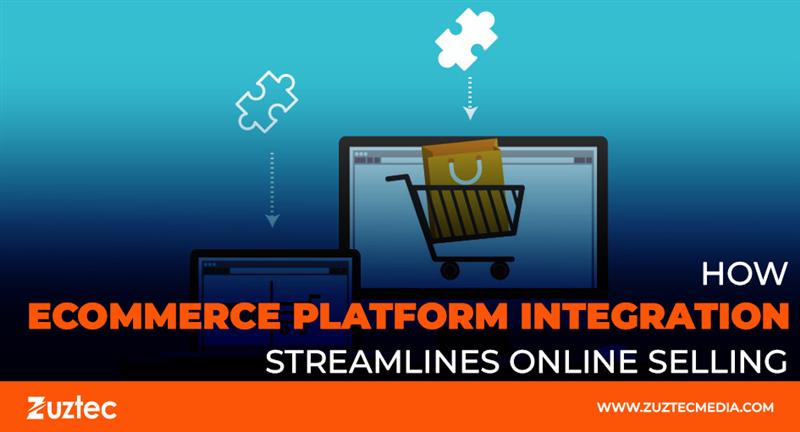
How Ecommerce Platform Integration Streamlines Online Selling
In the competitive world of online retail, success isn’t just about having great products or clever marketing. It’s about creating a seamless, efficient system that connects every part of your business—from inventory and orders to customer data and marketing tools. Ecommerce platform integration changes everything at this point. You can increase accuracy, streamline operations, and cut down on manual labor by connecting your store to other crucial tools and platforms.
E-commerce businesses today rely on a wide range of tools. These might include payment gateways, inventory management systems, CRMs, ERPs, shipping providers, and email marketing platforms. When these tools operate separately, it often leads to fragmented data, miscommunication between systems, and wasted time on repetitive tasks. But with integration, everything flows together in real time, ensuring your business runs more efficiently.
For instance, when someone places an order on your website, integration can automatically update your inventory, notify the warehouse, and send the customer a confirmation email. If the order data is also pushed to your accounting software, you eliminate the need for double data entry. As your business grows, such streamlined processes become essential to maintain speed and accuracy.
E-commerce platform integration not only improves backend operations, it also enhances the customer experience. Shoppers expect quick deliveries, accurate order tracking, and up-to-date inventory. Without proper integration, even one small delay or mistake can hurt your brand’s reputation. Whether you’re a small online shop or a growing enterprise, investing in strong platform integration lays the foundation for long-term growth and customer satisfaction.
Ecommerce Platform Integration Enhances Efficiency And Accuracy
E-commerce platform integration allows businesses to link different software systems into one unified ecosystem. Rather than switching between multiple dashboards or manually transferring data, everything works together in sync. This reduces human error, saves time, and allows your team to focus on strategic tasks instead of repetitive work.
One of the most common integrations is between e-commerce platforms and inventory management systems. This ensures your product availability is always accurate and automatically updated as orders come in or stock is replenished. It helps avoid overselling or running out of stock unexpectedly—both of which frustrate customers and hurt sales.
Order processing is another area that greatly benefits from integration. As soon as a customer checks out, the order details can be sent to the fulfillment center, shipping carrier, and accounting system. This automation shortens delivery times and ensures timely notifications to the customer.
Key Integrations Every E-commerce Business Should Consider
Choosing which systems to integrate depends on your business model and the platforms you already use. However, there are a few key integrations that offer value to nearly all online retailers.
Payment gateway integration is essential. When customers can pay using their preferred method—whether it’s a credit card, PayPal, or digital wallet—they’re more likely to complete their purchase. Shipping and logistics integration connects your store to major carriers like FedEx, UPS, or DHL. Customers appreciate being kept informed about where their orders are and when they’ll arrive.
In the middle of your operations, ecommerce platform integration can also connect your online store with marketplaces such as Amazon, eBay, or Etsy. This allows you to manage listings, orders, and inventory from one place. Multichannel selling becomes easier and more profitable when systems are fully connected.
Common Challenges And How To Avoid Them
While e-commerce platform integration offers many benefits, there are also challenges to consider. One major issue is compatibility. Not all systems are built to work together. If your e-commerce platform doesn’t support integration with your preferred CRM or shipping tool, you may need a developer to build a custom connection or consider switching platforms.
Another challenge is data consistency. If your systems aren’t synced properly, data can become outdated or incorrect. This could lead to inaccurate inventory counts, incorrect customer information, or failed orders. Testing your integrations regularly helps avoid these problems and ensures your systems are working in harmony.
Security is another concern. When you integrate systems, you’re passing data between platforms. It’s important to ensure all integrations are secure and follow best practices for protecting sensitive information, especially payment details and customer data.
Scalability is also key. As your business grows, you may add more sales channels or new tools. Your integration setup should be flexible enough to support that growth without requiring a complete overhaul.
Proper training and documentation are essential, too. Make sure your team understands how the integrated systems work and what to do if something goes wrong. Having a clear process in place makes it easier to handle issues quickly.
However, ecommerce platform integration is no longer a luxury—it’s a necessity for businesses looking to scale efficiently and provide a great customer experience. By connecting your systems—from payments and shipping to inventory and marketing—you create a seamless flow of information that saves time, reduces errors, and boosts productivity. Whether you’re managing a small store or building a global brand, the right integration strategy ensures every part of your business works in harmony. As e-commerce continues to evolve, staying integrated means staying competitive.

